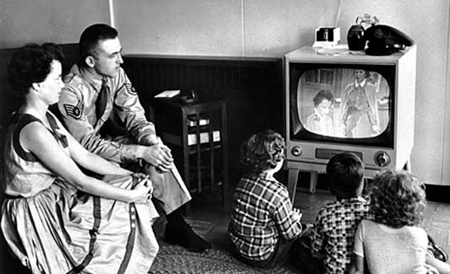In the past, the only way to maximize a sporting event’s audience was TV. As a result of it’s near ubiquity in every household, TV allowed events to transcend the venue and reach a national audience. If an event wanted to attract large non-endemic sponsors, like Jeep, Visa or Honda, TV coverage was essential.
 Unfortunately, TV's expense is overwhelming. As production and ditstribution is paid for by the events, almost none could afford live coverage and only the largest could produce a tape delayed show.
Unfortunately, TV's expense is overwhelming. As production and ditstribution is paid for by the events, almost none could afford live coverage and only the largest could produce a tape delayed show.
In recent years, the proliferation of high speed internet connections and dramatically cheaper production equipment has given rise to another option--live online broadcasts. But the question remains, is a live webcast better than purchasing TV time?
Although Adrenaline Garage has produced a number of TV shows, we thought we'd outline five ways that we think a live stream of your event is more effective than tape-delayed TV.
It's More Cost Effective
In years past, broadcast standard production meant very high production costs for even unimpressive live shows. Once the event was produced, distribution options were less than ideal. Events could either pay large sums to buy time on a national network or create deals with a patchwork of minor networks across the country.
Today, even large productions, such as the X Games, are using smaller, more cost effective production equipment. Internet streaming is much cheaper and convenient than purchasing air time.
Lower costs allow organizers to re-invest in their events by providing larger prize purses and better courses, which in turn creates more interest in the event.
It's More Compelling.
Events have a very short shelf life, and are most valuable while they are occurring. Once the results are known, the desire of your audience to see every run is sharply reduced. Your audience will only want to see highlights rather than each individual run.
During the event, there is a desire to see everything and not miss a second, as the outcome is uncertain and almost anything could happen. No one wants to miss the touchdown, home run or never before landed trick. This dramatically increases audience engagement and advertising opportunities.
In addition, internet distribution permits interactivity in a way that TV could never accomodate. Emailing the announcers, chatting with fans from around the world and voting on the best trick are just a couple ways that events have successfully involved their viewers and increased the engagement.
It's Better Targeted.
In the age of instant communication, "tape-delay" is a dirty word for the most passionate fans. For them, a tape delayed TV production means that while they would like to see the event live, they are forced to read about it online after the fact. When the event finally airs, they pay little attention to the TV broadcast because they already know the results and have seen the best moments on YouTube or Vimeo.
Coincidentally, the core audience--the ones not tuning in--are the ones of most interest to the sponsors. These viewers have the most invested in your event, are the most likely to be a part of the target demographic and most likely to respond to your sponsor advertising--unless, of course, you're trying to reach Sunday afternoon couch potatoes.
It Has a Larger Potential Audience.
The very nature of webcasting increases the size of your audience. TV requires that your audience have access to a TV and the right channel. On the internet, virtually no walls exist. Viewers without access to FuelTV, ESPN 7 or in another country still have access to your production.
With the proliferation of connected devices, your audience doesn’t need to be in a location with a TV and can view it virtually anywhere.
It's More Exclusive and Therefore has More Value.
YouTube has destroyed TV exclusivity. It's so easy for any viewer at your event to film and distribute--or event stream live--the best moments, long before your TV show airs. As we've mentioned, this only decreases the value of your production to adverstisers as you no longer have a monopoly on the content.
During an event, the live broadcast has exclusivity. If your fans want full coverage, your live webcast is the only source. Even if people stream the event from their cell phones, their live coverage will never compare to the quality of the live webcast. A live webcast is the best way to preserve and enhance the value of your event for sponsors.
What do you think are the various strengths and weaknesses of TV and live webcasts?

